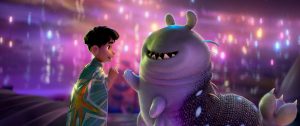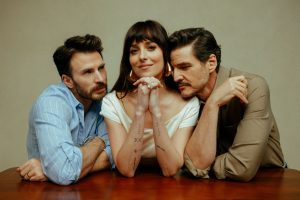Reviews include M3GAN 2.0, Familiar Touch, and I’m Your Venus.
How Tracey Deer’s coming-of-age story Beans became a film for the ages
March 4, 2022
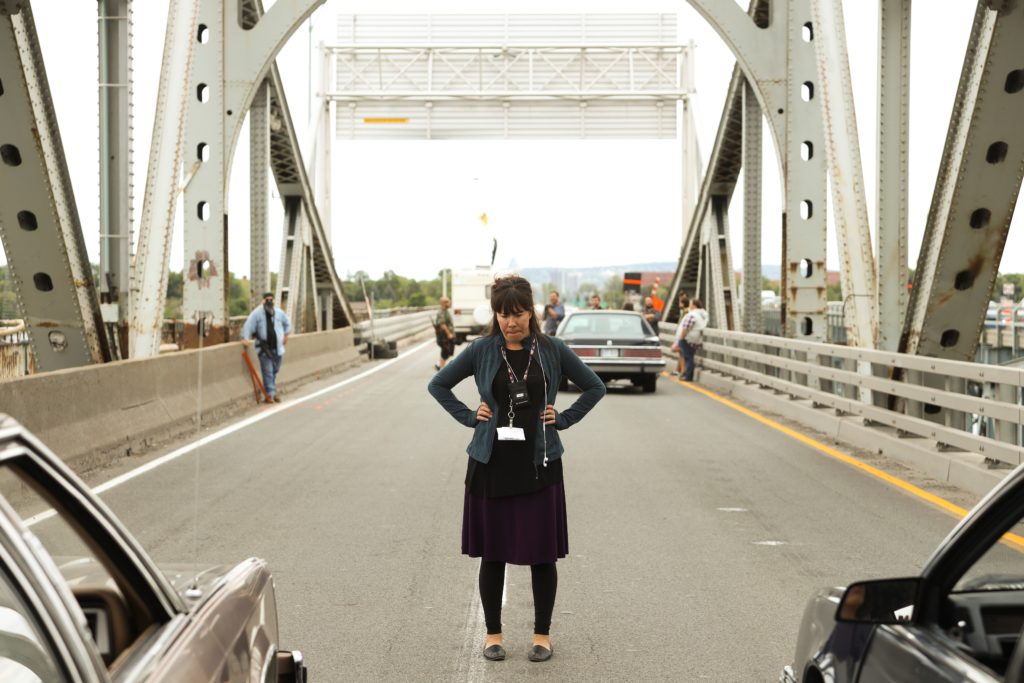
“This is what happened. This is what happened to me.”
The desire to make films is often ignited in youth. Beans director Tracey Deer was twelve years old when she was “hit by the thunderbolt” and decided that she wanted to become a filmmaker. She also knew the story she wanted to tell because she was living inside it.
Over seventy-eight days in the late summer of 1990, an armed standoff, known as the Oka Crisis, took place between Mohawk protesters and the Quebec police, the RCMP, and the Canadian Army in and around the Mohawk community of Kanesatake. Deer was born and raised in the neighbouring Mohawk community Kahnawà:ke, which stood alongside the Mohawk people of Kanesatake during the Oka Crisis.
Deer’s coming-of-age film Beans, a nominee for the 2021 Rogers Best Canadian Film Award alongside Night Raiders and Scarborough, is her first dramatic feature. Its story draws deeply from her adolescent, family, and community life at that time. Beautifully made, funny, frightening, and heart-wrenching at times, the note-perfect film revolves around an unforgettable Mohawk girl nicknamed Beans, played by Kiawentiio, who is living through the Oka Crisis and growing up fast.
As Deer told me during a long video conversation earlier last month, Beans has an even deeper connection to her adolescent self than the story it tells.
This interview has been edited and condensed for length and clarity.
Beans screened at film festivals around the world, opened in Canadian theatres, and won awards—most of this during COVID and lockdowns. Are there reactions that have surprised you? What have audiences been curious about, and how do you feel about it?
The big thing about my experience of the summer of 1990 was that I felt powerless. I felt voiceless, I felt disposable. Much of my quest as an Indigenous woman and my work as an Indigenous filmmaker is to have a voice and to empower the voices of others. This film is saying to the world, “This is what happened,” but it’s also saying, “This is what happened to me.”
People are still writing to me after seeing the film. For the little girl who felt so invisible and powerless, this is the exact opposite feeling, to know that the film is opening people’s eyes. I got a beautiful message the other day from somebody who was fifteen at the time of the Oka Crisis and bought into the terrorist narrative. And now she understands much more and thanked me that she has this film to help her journey as an ally.
I have always felt if my work can touch just one person, then I’m successful. And there have been so many through this film that have been impacted. I’m grateful to all the partners, all the collaborators, who supported me through what has been the most difficult project I’ve ever taken on.
Let’s look back to your decision to develop the film that became Beans—were there certain things happening in your life or career that allowed you to start?
Beans was the ultimate passion project and also the project that scared me the most. I had been in the business a good twelve years by that point—ten of those in documentary.
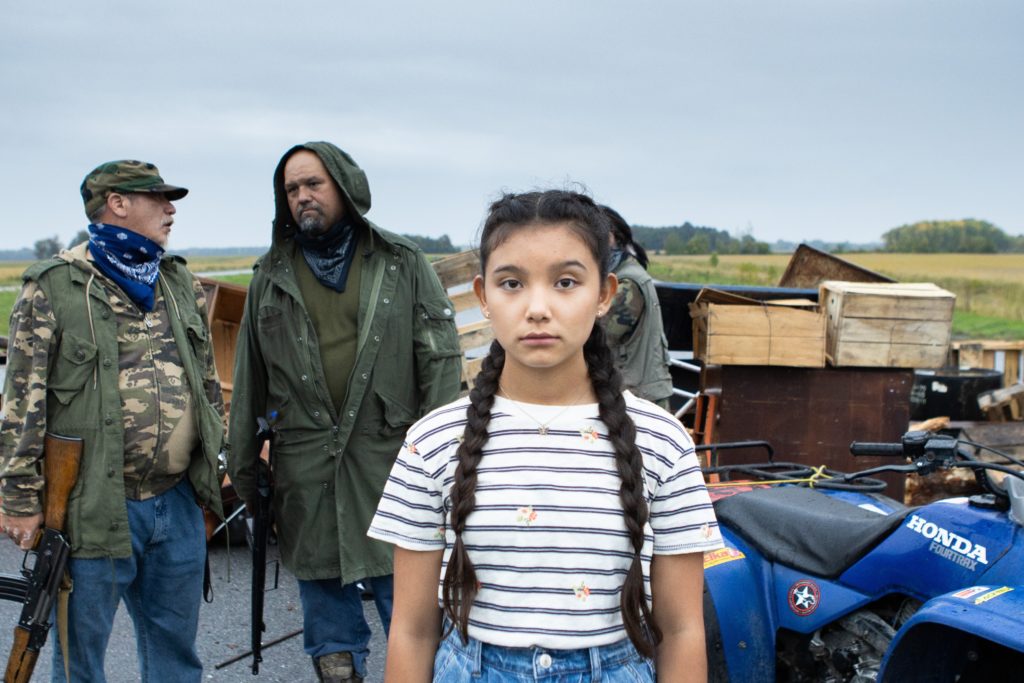
A lot of people, like me, first got to know you from your feature documentary Mohawk Girls (2005), and then even more did with your dramedy TV series inspired by it, Mohawk Girls (2013-17). Was your move into fiction a turning point?
I hit a bit of a documentary wall after Club Native (2008). After it was out in the world, I was completely wiped out. When it was time to figure out what’s the next story, I had this fear, almost, of something taking over my life again. I started wondering, “Am I done as a filmmaker?” That was scary because I’ve only ever wanted to be a filmmaker. The original dream, when I was little, was to be a fiction director. So I made a short film, Escape Hatch, that was completely funded by a Canada Council grant, which provided a very safe space. It showed people what I could do in fiction and gave everyone an idea of what I was thinking for the TV show—so that was Mohawk Girls.
At that time, I dug back in, checking in with little Tracey, and remembered the big dream to one day tell this fictional story of the Oka Crisis. I started to attempt to write it—and I say attempt because it was a really stalled process.
I’m curious about that person, little Tracey. Did she realize what she was in the middle of? There is such joy in the main character Beans (Kiawentiio) and her younger sister Ruby (Violah Beauvais) at the beginning of the film.
At the time, I did not realize how massive this event was and what it meant to my people, to Indigenous people, to the country. The danger of what was happening had not yet sunk into us as kids. All of a sudden, our parents were home, they no longer had gas for their cars. But we kids were biking on a highway. Me and my sister were always looking for adventure, and now the adventure had come to us. I try to capture that feeling at the beginning of Beans.
Then you start seeing images on the news that don’t make sense. You hear snippets of the adults talking, see how stressed your parents and your aunties and uncles are. Once I was in the crosshairs of it, with the mob and the rocks—that was something I actually lived. It shattered my innocence—for my mother and my sister to be in danger. We were a convoy of cars filled with my aunties, cousins, school friends, so to see that violence acted upon us, in my young brain there was no way to process it.
How do you stay in touch, stay true to that perspective, navigate that relationship with your younger self, and bring it all back in the film?
It was just the most awful time [pausing to sigh] of my life. I can still just really, really remember. How scary, how confusing, how angry. I learned to hate in that moment. And what is a young person to do with this massive ball of hate sitting inside their chest? Eventually, it turned inward. I figured I had done something wrong, there’s something wrong with me, and you don’t know what to do with that. [Weeping] So, it was a number of very, very dark years. I was suicidal. I’m happy I found my way out of that. With the love of friends who accepted me for who I am and embraced me. But I remember how hard it was.
I’m sorry. Thank you for sharing that with me.
A big goal of the film was to share that with people. So they understand how damaging these kinds of events are to our young people. So many don’t find their way out. It affects them, their entire lives, or they take their lives. This is one thing you can do better as a country, right? Make things safe and accepting for my people so that we can thrive too.
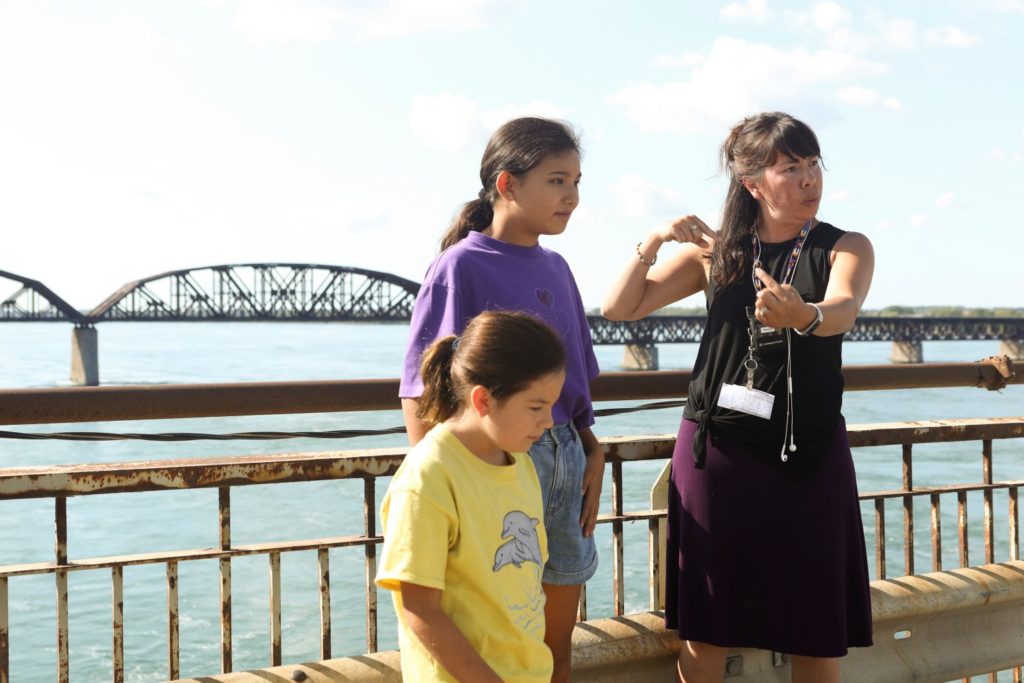
Did you work on your own and then bring in others? What was the trajectory of that writing process?
It was slow going on my own for a few years [with] internal resistance about going back to those memories. Producer Anne-Marie Gélinas [EMAfilms] was super supportive of this project and of my voice. Every time we had a meeting, she would ask, “How can I help?” At one point, I had been working on Mohawk Girls for a while and had great energy bouncing ideas off my writing partner, Cynthia Knight, so I asked Anne-Marie if we could get a story editor—and that’s how [Beans co-writer and executive producer] Meredith Vuchnich came on board. She was really embedded in the process; she revealed her whole heart to me.
What was your screenwriting relationship like?
My perspective as an Indigenous person was very focused. You take for granted what other people don’t know, so Meredith would raise the flag: “What does that mean?” We wanted to give people enough to understand the Oka Crisis but also stay with our young people because it’s a coming of age story. I didn’t want it to be about the Oka Crisis. I wanted it to be about this this young girl and what it means to be a young Indigenous person in this modern, complex, very confusing world.
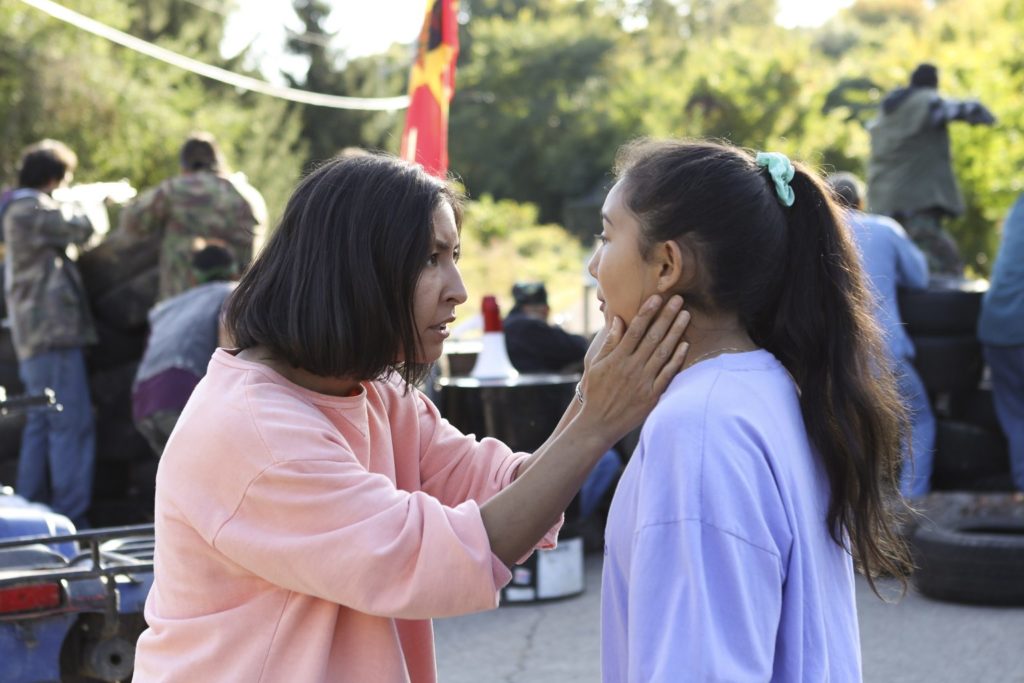
Let’s talk about your production—your shooter, working with the cast, especially the kids, and communities. When did things get rolling?
In early 2019, we finally cracked the script. The producer was able to do her job and all of our financial partners were on board, so things moved quickly from that point. We were in prep that summer to shoot. Some of the crew I’d worked with since Mohawk Girls, but many I worked with for the first time.
And you had a female shooter . . .
I did! Marie Davignon [Black Conflux], who I hadn’t worked with before. When we first met, I got all the feels with her. I could speak to her about what I was afraid of coming into my first feature, what I would want her guidance on, and what I thought my strengths and weaknesses were. I don’t know what the film would have been with without her because we did so much problem solving.
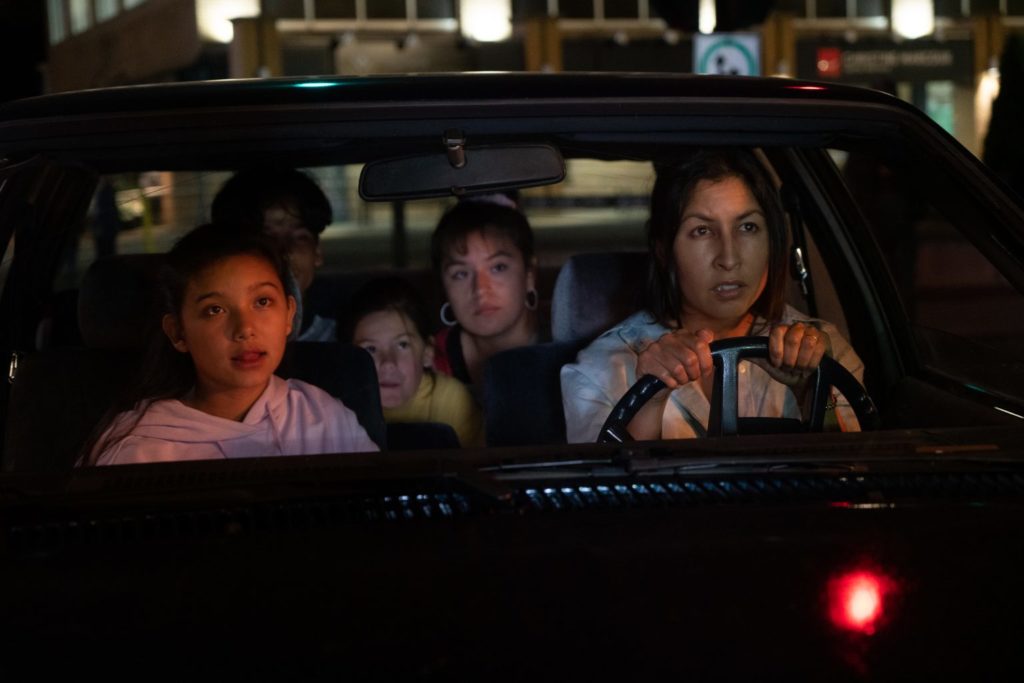
There’s a lot of movement and many different locations. What were the challenges? In particular, how did you made sure that you were okay, and that everybody was okay, considering the setting of the story?
Almost daily we were at a new location, and every location presented its own challenges. I didn’t want to make the film at any cost. I would only do this if we could all be safe and have a wonderful time. So how do we do that when there’s so many traumatic scenes, and I’m working with children? Figuring that out was a big part of prep and brainstorming with every department. We had an acting coach for the kids. Many of them were discovered talents, so they didn’t have the tools to do this safely from an actor’s perspective. So our acting coach taught them how to emotionally get ready for a scene, how to be present for it, but then how to let it go. Whenever possible, we separated filming their section of the scene from the rest of the scene. Often times, I’m speaking the entire shot. So I’m telling them what’s happening: “Now you can’t believe it, Now you’re looking for your mom.” They don’t see people running and screaming. They’re not hearing these angry slurs. They’re not seeing people throwing rocks at them. You would not know it to watch the films because their performances are just top notch.
I appreciated the archival new footage you choose and how seamlessly it was woven into the storytelling. Can you tell me about that decision to use it in your script?
First of all, I viewed all the archival footage of Oka Crisis twice before because I used some of it in Mohawk Girls, and again in Club Native. So, in the writing of this film, I was very aware of what is out there, and made sure to have archival pillars in the film for many reasons. I wanted to make sure people understood that this really did happen, and it was not some fictional event that I had created.
Also, during script writing, there was so much time and energy being spent making sure people understand what was going on and that was taking away from being in this perspective of the main character. And the reality was that as a twelve-year-old I often didn’t know what was going on. I thought the archival moments would give people in enough context to understand her world. I wanted the audience to live within Beans’ world.
Beans is available in digital release including via Cineplex and the Toronto Public Library.
The winner of the Rogers Best Canadian Film Award will be revealed at the TFCA Awards Gala on March 7.


